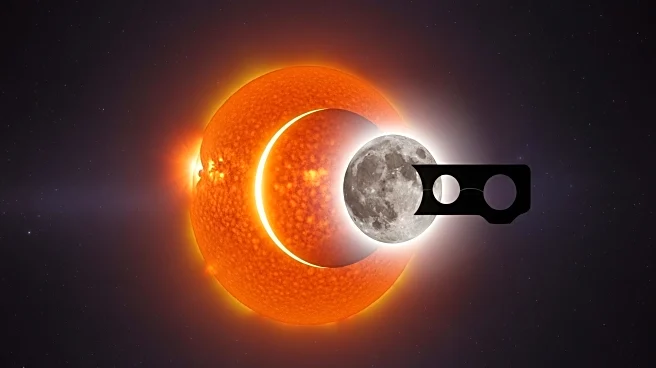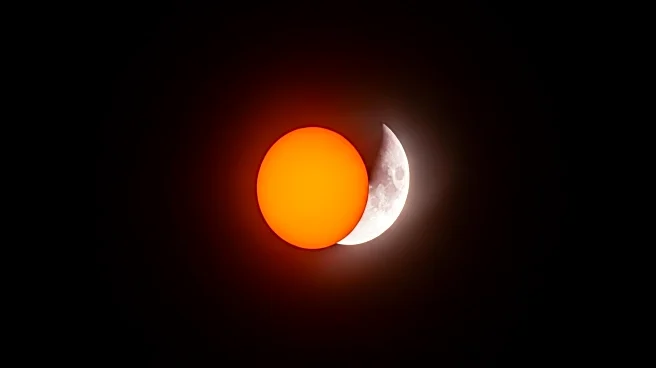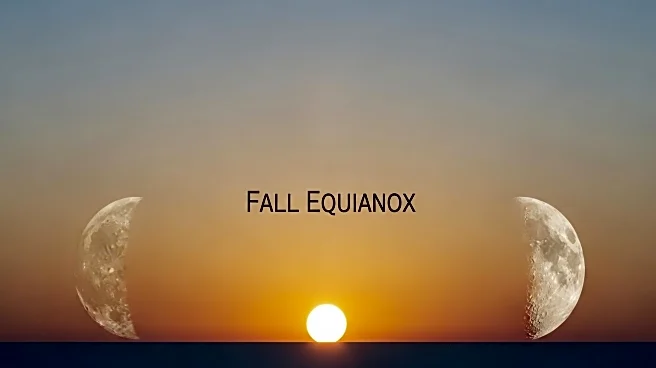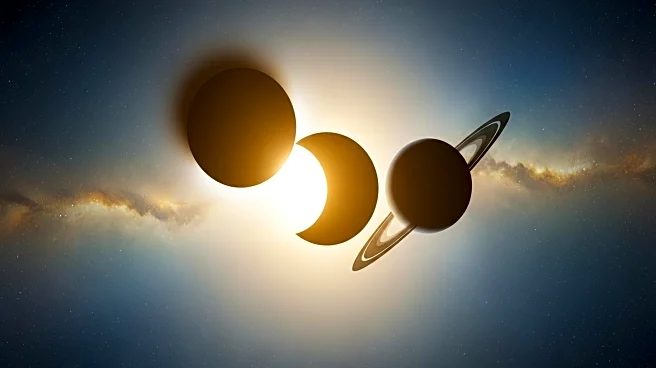What is the story about?
What's Happening?
The autumnal equinox marks the transition from summer to autumn in the Northern Hemisphere, occurring at 2:19 P.M. EDT. This event signifies equal sunlight distribution across both hemispheres, as the Sun appears directly above the equator. The equinox also heralds the start of astronomical spring in the Southern Hemisphere. Observers can witness celestial phenomena such as the Double Cluster in Perseus, which includes open clusters NGC 869 and NGC 884. These clusters are visible in the northeastern sky around 10 P.M. local daylight time, offering a striking view of stars at low magnification.
Why It's Important?
The autumnal equinox is a significant astronomical event that impacts seasonal changes, influencing weather patterns and ecological cycles. In the Northern Hemisphere, it marks the end of summer, affecting agriculture and energy consumption as daylight hours decrease. The equinox also provides opportunities for astronomical observations, with celestial objects like the Double Cluster in Perseus becoming prominent. This event is crucial for scientists and enthusiasts who study the sky, as it offers a chance to observe unique star formations and understand the dynamics of Earth's rotation and orbit.
What's Next?
As autumn progresses, the Northern Hemisphere will experience shorter days and cooler temperatures, impacting various sectors such as agriculture, energy, and tourism. Astronomers and sky watchers will continue to monitor celestial events, with the Double Cluster in Perseus remaining a focal point for observation. Educational institutions and science communities may organize events to engage the public in understanding astronomical phenomena and their implications on Earth's environment.
Beyond the Headlines
The equinox has cultural and historical significance, often celebrated in various traditions and festivals worldwide. It symbolizes balance and change, reflecting the interconnectedness of Earth's natural systems. The event also highlights the importance of astronomical research in understanding climate patterns and environmental shifts, contributing to broader discussions on sustainability and conservation.
AI Generated Content
Do you find this article useful?














